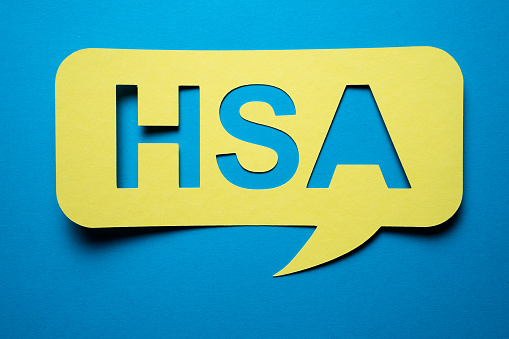The article addresses the aspects related to the labeling requirements in vitro diagnostic devices should comply with, as well as the approach to be applied with respect to risk analysis in order to ensure the proper health protection and safety of patients.

Table of Contents
The Health and Sciences Authority (HSA), Singapore’s regulatory agency in the field of healthcare products, has published a guidance document dedicated to the registration of in vitro diagnostic (IVD) medical devices.
The document provides a general overview of the applicable Singaporean regulatory requirements, as well as additional clarifications and recommendations to be taken into consideration by medical device manufacturers and other parties involved in order to ensure compliance thereto.
At the same time, it is important to mention that provisions of the guidance are non-binding in their legal nature, nor are they intended to introduce new rules or impose new obligations.
The authority also reserves the right to make changes to the guidance and recommendations provided therein, should such changes be reasonably necessary to reflect corresponding amendments to the underlying legislation.
The scope of the guidance covers, inter alia, the regulatory requirements related to device labelling and details to be included in the submissions in this respect. The document also describes the approach to be applied when it comes to risk analysis.
Device Labelling
According to the guidance, the term “device labelling” covers any form of written, graphic, or printed representation that is affixed to a medical device.
This representation can be found either on the device itself, its packaging, or accompanying documents when the device is supplied to users.
The type and depth of the labelling data largely depend on the device’s complexity and associated risk class.
Primary Components of Labelling:
1. Device and Packaging Labels – This section refers to the information found on or attached to any level of the device’s packaging, including its outer layer.
The authority additionally emphasizes that if for any reason, labelling is not presented on the exterior packaging, such data must be visible through it.
In situations where the label size or nature (such as a vast warning label on an X-ray machine) makes physical attachment impossible, alternatives like photographs or technical drawings can be utilized as long as they are appropriate.
2. Instructions for Use – This document provides comprehensive directions that allow physicians or end-users to use the device safely and as intended.
Critical components of this instruction include indications, contraindications, potential side effects, warnings, and conditions that need management to ensure the device’s safety and efficacy.
Labelling: Additional Considerations
As further explained by the HSA, labels should be provided in their original color for primary and secondary packaging levels.
All labels must be in English. Every component of an IVD medical device system should have a label.
If presenting individual labels for variants is not feasible, a representative label with variable fields clearly annotated will suffice.
The manual should be comprehensive and include the following details and information:
- Intended purpose of the device
- User directions
- Limitations
- Warnings and precautions
- Component materials
- Storage guidelines
- Expiry or stability dates
- Specimen handling and its storage data
- Results interpretation
- Performance metrics
- Study designs, including sample types, target concentrations etc.
Promotional Materials and Brochures should be included in this section to assist in the evaluation process of the IVD medical device.
However, it is important to mention that including them does not imply that the claims they make are approved by the authority.
Risk Analysis
As it was mentioned before, the scope of the guidance also covers the aspects related to risk analysis to be conducted to ensure the safety and proper performance of the product in question when used for its intended purpose.
According to the guidance, risk analysis constitutes an integral part of device evaluation. The data in this section should summarize or reference the results of an analysis based on internationally recognized standards.
Such analysis should correspond to the device’s complexity and its associated risk category.
As further explained by the HSA, the key considerations related to the risk analysis include, inter alia, the following ones:
- Potential Hazards: A comprehensive list of potential hazards, including cybersecurity-related ones if relevant, should be prepared.
These hazards could either be directly linked to the device or indirectly through user interactions.
Examples include injuries from moving parts or radiation exposure from X-ray machines.
A thorough evaluation comparing these risks against the device’s benefits, along with strategies employed to minimize these risks to acceptable levels, must be discussed. - Risk Analysis Report: The preferred format for information in this section is a risk management report.
For optimal results, it is recommended that the risk management activities align with the ISO 14971 standard. This report should detail the risk analysis, evaluation, and control measures for the IVD medical device.
Additionally, the report should address the risks and benefits linked to the device’s use.The entity responsible for conducting the risk analysis and the techniques employed must be explicitly mentioned to ensure their appropriateness for the specific medical device and its associated risks.
In summary, the present HSA guidance highlights the key elements to be covered by the labelling used for in vitro diagnostic medical devices based on their nature and intended purpose.
The document also provides additional clarifications regarding risk analysis and the way it should be conducted.
How Can RegDesk Help?
RegDesk is an AI-powered Regulatory Information Management System (RIMS) designed to simplify global compliance for medical device companies. With regulatory intelligence covering 120+ markets, RegDesk helps you prepare and publish global submissions, manage standards, conduct impact assessments, and stay ahead of regulatory changes all from a single, centralized platform. Expanding into new markets has never been easier.


